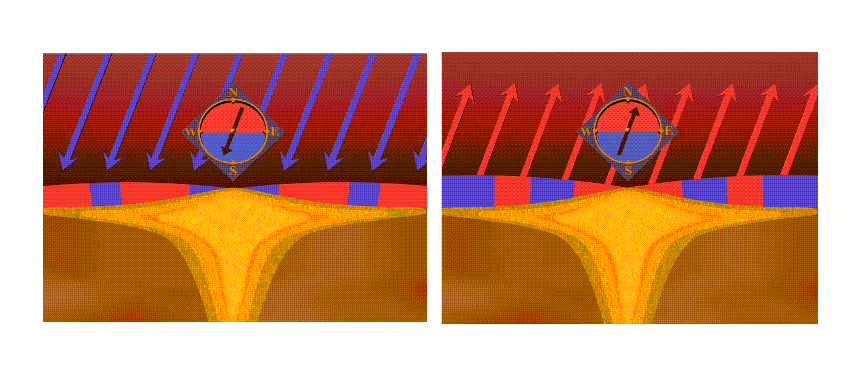
Mars Global Surveyor Magnetic Field Experiment
Mars Magnetic Stripe Generation

These images are an artist's concept of the process that may have generated magnetic stripes in the crust of ancient Mars. In the left image, the blue arrows and compass needle indicate the direction of the magnetic field. The yellow-orange shape represents a pool of molten rock (magma) upwelling beneath the Martian crust. The red and blue bands are magnetized crust on either side of a spreading center, or rift.
The bands of magnetized crust apparently formed in the distant past when Mars had an active dynamo, or hot core of molten metal that generated a global magnetic field. Mars was geologically active, with molten rock rising from below to cool at the surface and form new crust. As the new crust cooled and solidified, the magnetic field that permeated the rock was "frozen" in the crust. Periodically, conditions in the dynamo changed and the global magnetic field reversed direction. This is illustrated in the right image, with the red arrows and compass needle indicating a new magnetic field direction.
The oppositely directed magnetic field was then frozen into other, freshly extruded crust (right image: red bands in center). The crust preserved a fossil record of the magnetic field directions that prevailed at different times in the ancient past, like a Martian tape recorder (red and blue bands in the crust). When the hot core cooled, the dynamo ceased and the global magnetic field vanished. However, a record of the magnetic field was preserved in the crust until the MGS detected it.
IMAGE CREDIT: NASA Jack Connerney/Mario Acuņa/Chris Meaney






